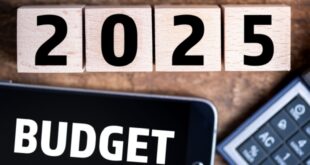Fourteen percent of the county’s workforce is in danger of not receiving any help from the CARES Act, the Trump Administration’s main program for helping people and businesses survive the COVID-19 pandemic, according to the UC Riverside study.
A substantial number of workers in Riverside County are unlikely to receive COVID-19- related insurance from the CARES Act, a study has found.
The report by the UC Riverside School of Business Center for Economic Forecasting & Development based its conclusions on two sets of data provided by the U.S. Census Bureau, according to the report’s introduction.
The study – The Covid-19 Pandemic in Riverside County: Unemployment Insurance Coverage and Regional Inequality – identifies three county submarkets that are less likely to receive unemployment insurance from the CARES Act: Palm Desert, the northern part of HINDA [an unincorporated pocket with Beaumont’s borders] and the south section of Temecula.
Overall, approximately 14 percent of Riverside County’s workforce is at risk of not receiving pandemic-related unemployment insurance, said James McKeever, a research associate at the center for economic forecasting and a co-author of the study.
The 15-page study found “deep nuances” regarding who in Riverside County was more likely to receive unemployment insurance from the CARES-Act, the Trump Administration’s main emergency program dealing with the economic fallout from COVID-19.
Since its creation in March, the Coronavirus Aid, Relief, and Economic Security Act has directed billions of dollars in relief aid to U.S. citizens, major industry, and small businesses. Growing from its initial $500 million to $2.2 trillion, the CARES Act is the largest economic relief program in U.S. history, the equivalent of 10 percent of the country’s gross national product.
It is scheduled to end July 31.
During the past week or so, the national media has been rife with reports about the CARES-Act favoring some regions and groups more than others, of small airports getting more money than large ones and hospitals not getting enough to help them stay afloat.
In Riverside County, too many workers are not eligible for help to begin with, not only from the CARES-Act, “which doesn’t include provisions for all members of society,” according to the study.
“We are talking about 14 percent of the working people in Riverside County land outside of the CARES Act and other forms of relief, and there are a lot of reasons why that might be true, McKeever said. “It could be that some people don’t have enough work history to be eligible, or they don’t work enough hours. It could also be that some people haven’t applied yet.
“Whatever the reasons, 14 percent of the workforce being unlikely to receive benefits is a lot.”
But the biggest takeaway from the report might not be the number of workers ineligible for unemployment insurance but how much of that money has been distributed. Areas receiving the most help are often next door to the areas receiving the least amount of help as if to highlight some of the county’s income inequality issues.
For example, Palm Desert’s northern and western areas had 100 percent coverage rates, but those territories bordered areas that had the lowest coverage rates. Also, clusters of at-risk workers were found in urban and rural areas at more or less an equal rate.
“That’s not something we found in Los Angeles or Orange County,” McKeever said. “To find the same amount of inequality in rural and urban areas is a little strange. That will have to be addressed if we’re going to have a solid, long-term recovery.”
With the CARES-Act set to expire at the end of the month, the Trump Administration must decide whether to expand the program or risk serious consequences, said Paul Ong, director of the Center for Neighborhood Knowledge at UCLA and a co-author of the study.
“A lot of people are going to need help with their rent and their mortgage payments,” Ong said. “They will lose their houses, and that would cause a ripple effect throughout the economy that would be disastrous.”
The report makes several recommendations, including providing more insurance relief, creating policies that get money into “marginalized populations,” enact state and local relief policies that will fill in the gaps not covered by the federal government and make sure low-income residents know about all of the relief help that is available to them.
“This is all unprecedented and it’s all happening fast,” Ong said of the COVID-19 pandemic. “What we need is a major policy discussion.”
But government intervention – be it the CARES Act or any relief program – will work only for so long, said Jay Prag, an economics professor at the Drucker School of Management at Claremont Graduate University.
Any bailout money should be distributed only to where it will do some good, Prag said.
“The government shouldn’t be bailing out businesses that aren’t going to survive anyway,” Prag said. “A lot of businesses have folded because of COVID-19, and more will fold, but most of them had one foot in the grave anyway.”
Ultimately, the Coronavirus should determine how much government intervention is necessary.
“If the pandemic starts to wind down then the level of government intervention won’t be that important,” Prag said. “If it’s still going on a year from now people will need more help, but I wouldn’t be surprised if the government is out of money by then.”
 IE Business Daily Business news for the Inland Empire.
IE Business Daily Business news for the Inland Empire.


